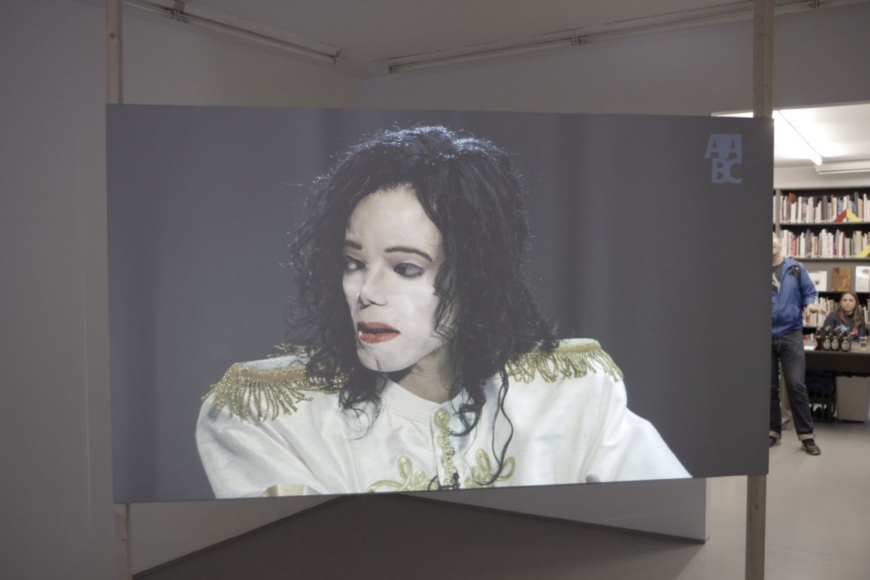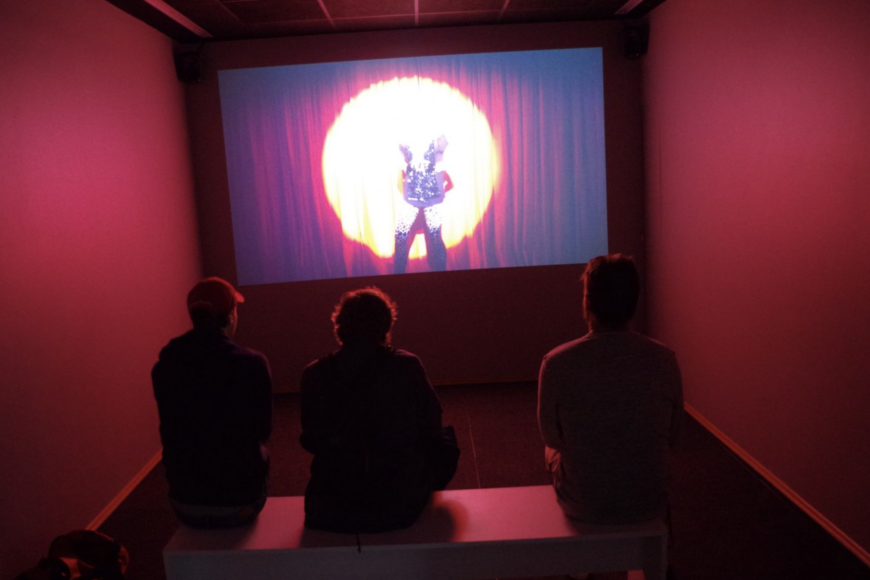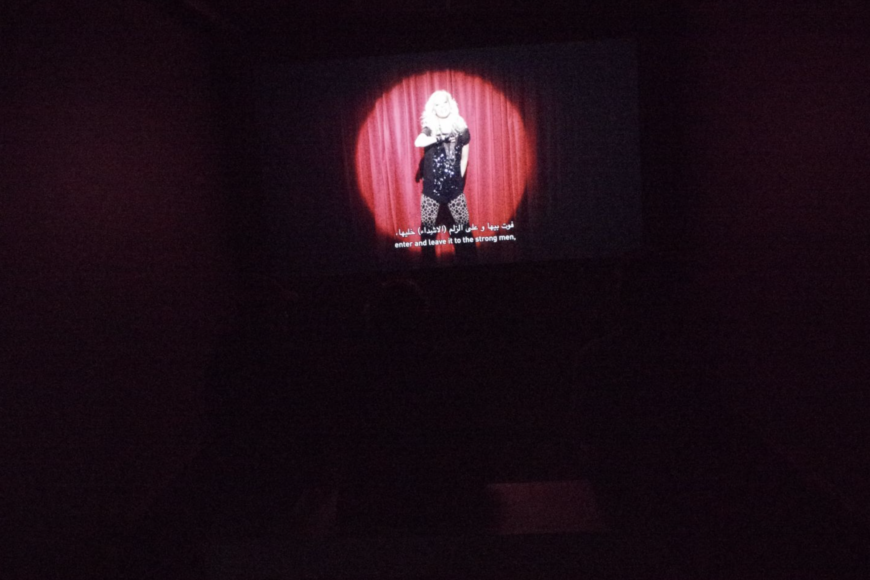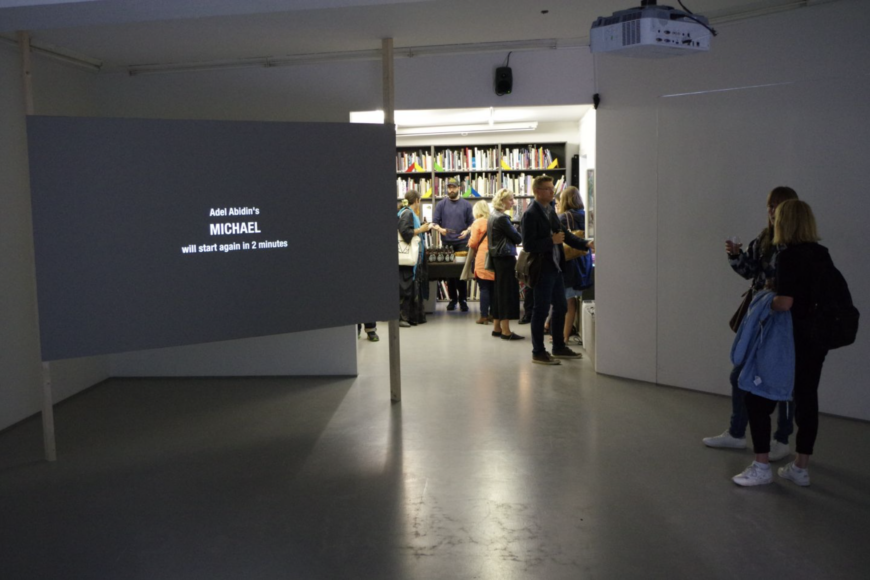BETWEEN TERROR, POP MUSIC AND SEDUCTION
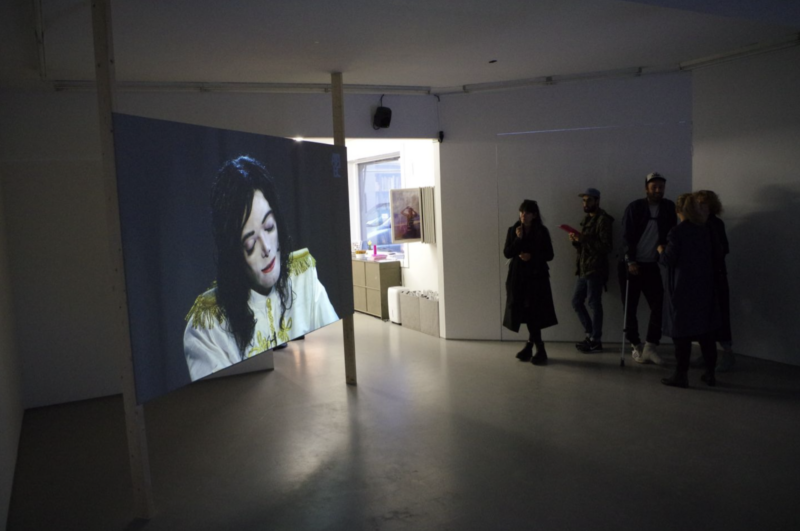
Fotogalleriet is pleased to announce its forthcoming exhibition with video-artist Adel Abidin. Based on an initiative by Kulturbyrået Mesén, the exhibition at Fotogalleriet is part of a larger presentation of his work in the city of Oslo, also visible in various places at Oslo Central Station.
Adel Abidin’s video works are often humorous, absurd and offer new perspectives on global, social, political and cultural issues. Abidin uses popular cultural references in many of his videos, including icons such as Marilyn Monroe, Michael Jackson or the Pope figure. Resulting in both provoking and amusing situations, Abidin nevertheless manages to reach out to a broad audience.
The particular works displayed at Fotogalleriet discuss idol worship and power, even though the films have very different starting points.
In Michael, Abidin shows how pop icons take over the role of religion and how they are looked upon as gods. In the video, Michael Jackson has risen from the dead, and the news of his resurrection creates hysterical states among fans worldwide.
The video work Bread of Life can be looked at as an interesting dialogue with Michael by creating a link to this “new religion”. The symbolic bread is a symbol of life itself in many cultures and religions – and the work’s title quotes and connects to Jesus and the Last Supper, where bread is shared among the disciples as a symbol of (their) body, life, and of the son of God. Three Love Songs examines both our relationship with music and the pop culture phenomenon, but also in relation to issues of power and authority. In these three music videos female singers sing passionately something that is perceived as love songs, but that prove to be lyrics of Iraqi propaganda songs dedicated to Saddam Hussein. Sobering and uncomfortable, these works play in the intersection between pop, jazz, lounge and terror.
The video Automaton presents the showcasing of a souvenir shop in Rome selling spinning Pope dolls: an absurd and comical representation of God’s deputy on earth. In the video the Pope spins like in an endless merry-go-round, accompanied by a tune reminiscent of a musical box. Passers-by can listen to the tune without entering the gallery space and at night, when Fotogalleriet is closed, plug their own headphones to continue the godly musical experience.
The works displayed at Oslo Central Station question ideals of identity, beauty, tolerance and gender: Coverup! is a parody of the famous Marilyn Monroe scene in which her white dress is blown up.
In Abidin’s video Monroe is replaced by an Arab man wearing a traditional robe from the Middle East. Abidin plays on our perceptions of attractiveness, seduction and sex. The work appears both as a video installation and as a large format photo on the facade of the Airport Express Train terminal. Camel Toe is a large photograph on the façade of Oslo Central Station and shows stereotypical alpha males in poses that question sexuality and gender. By shamelessly mixing the masculine and the feminine, a grey area arises between the two sexes. Camel Toe will be on view from 22 August.
Adel Abidin (b. 1973, Baghdad) is a renowned contemporary artist working mainly with video and photography. In 2015 he received the Finland Prize, and his work is included in the collection of the Finnish National Gallery. He lives and works in Helsinki and Amman. His work has been shown both nationally and internationally including Vanhaerents Art Collection, Brussels (2016), at the Iranian Pavilion, 56th Venice Biennale, Venice (2015), KIASMA Museum of Contemporary Art, Helsinki (2015), Barjeel Art Foundation, Sharjah (2015), Turku Art Museum, Turku (2013) and Kunsthalle Winterthur, Winterthur (2012).
The project is initiated by Kulturbyrået Mesén and conducted in collaboration with Fotogalleriet, the Finsk Norsk Kulturinstitutt and Rom for Kunst.
Curated by: Kulturbyrået Mesén, Rom for Kunst and Fotogalleriet
Supported by: Fritt Ord, Kulturetaten Oslo Kommune and Norskfinsk Kulturfond
